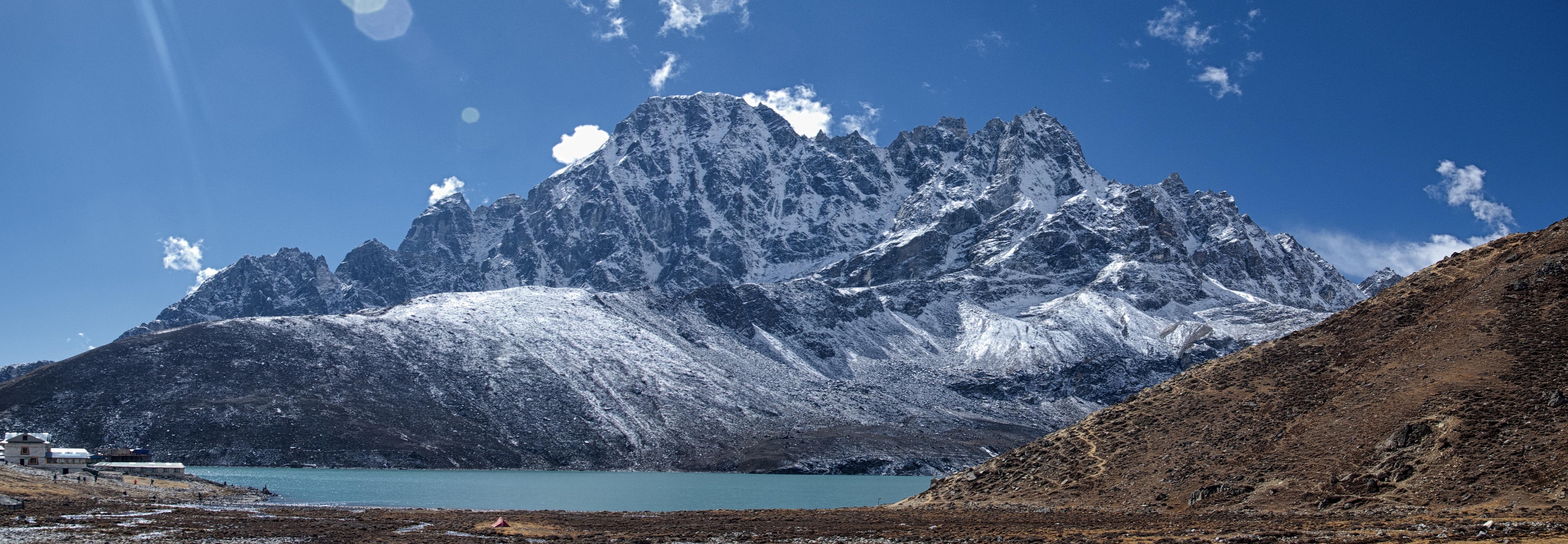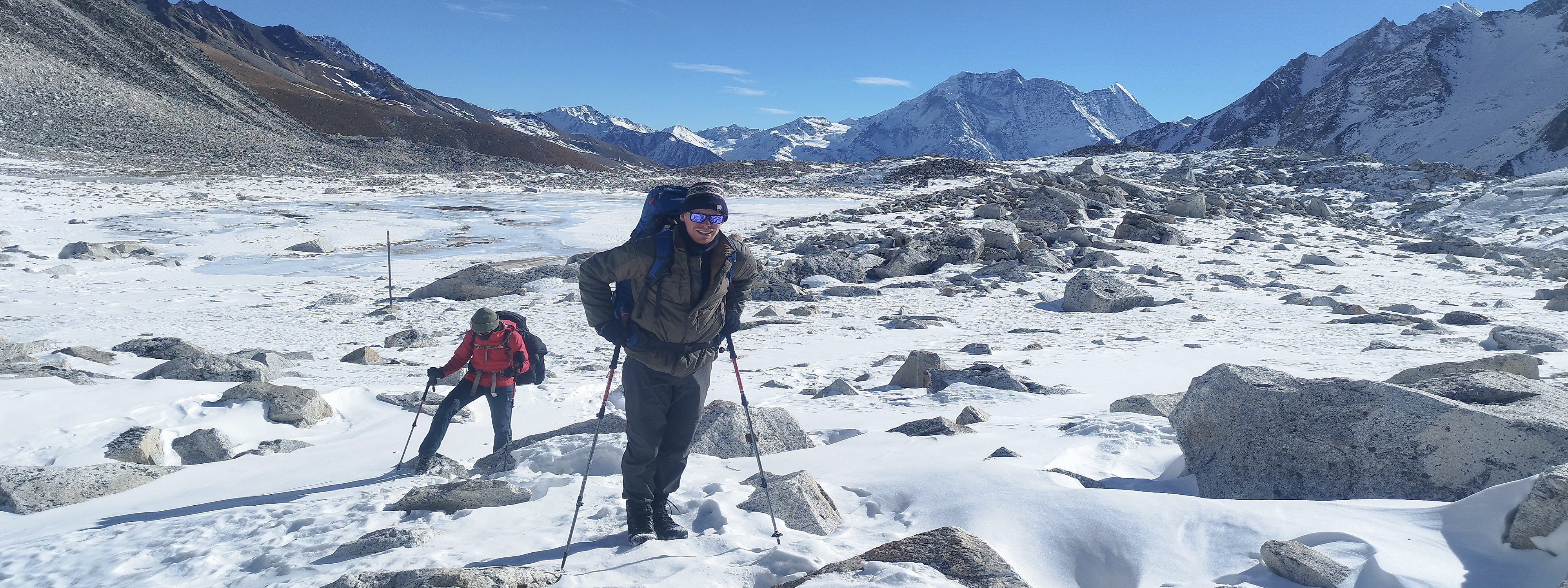Best Time to Trek in Nepal: Weather, Seasons, and Insider Tips
 Saraswati Karki
Saraswati KarkiTable of contents
- Overview of Trekking Seasons in Nepal
- Trekking in Spring (March to May)
- Trekking in Summer/Monsoon (June to August)
- Trekking in Autumn (September to November)
- Trekking in Winter (December to February)
- Month-by-Month Weather Breakdown
- Choosing the Best Time Based on Your Preferences
- Insider Tips for Trekking in Nepal

Trekking in Nepal is an unforgettable adventure that offers spectacular mountain views, diverse landscapes, and rich cultural experiences. However, choosing the best time to trek is crucial to ensure you make the most out of your journey. This guide will walk you through the weather patterns, trekking seasons, and insider tips for the best trekking experience in Nepal.

Overview of Trekking Seasons in Nepal
Nepal's trekking seasons are divided into four distinct categories:
Spring (March-May): One of the best seasons for trekking, with clear skies, blooming rhododendrons, and moderate temperatures.
Summer/Monsoon (June-August): Characterized by heavy rainfall and lush greenery, but also increased chances of landslides and leeches.
Autumn (September-November): The most popular trekking season, with perfect weather, clear views, and vibrant festivals.
Winter (December-February): Cold temperatures at higher altitudes but fewer trekkers and serene, snow-covered trails.
Trekking in Spring (March to May)
Weather: Moderate temperatures, especially in the lower altitudes. During this season, mornings and evenings are cool, while daytime temperatures remain pleasant. Snow melts at higher altitudes, and blooming rhododendrons add color to the trails.
Best Treks:
Everest Base Camp Trek: Clear skies make it ideal for capturing incredible mountain views.
Annapurna Circuit Trek: Perfect for scenic landscapes with blooming flora.
Langtang Valley Trek: A great time to explore this less crowded but beautiful trekking region.
Insider Tip: Book your accommodation and guides in advance, as spring is one of the busiest seasons. Try to trek early in the morning to avoid the daytime heat at lower elevations.
Trekking in Summer/Monsoon (June to August)
Weather: The summer season in Nepal coincides with the monsoon. Expect heavy rainfall, high humidity, and mist-covered mountains. Trails in popular regions can be slippery, and there’s a risk of landslides in certain areas.
Best Treks:
Upper Mustang Trek: Located in the rain-shadow area, this region experiences minimal rainfall, making it perfect for trekking during the monsoon.
Dolpo Region Trek: Also in the rain-shadow area, offering dry conditions and remote landscapes.
Insider Tip: Wear good waterproof gear and be prepared for leeches on trails. Trekking in rain-shadow areas like Upper Mustang or Dolpo is highly recommended during the monsoon season.
Trekking in Autumn (September to November)
Weather: Clear skies, mild temperatures, and stunning mountain vistas characterize autumn. It is the most popular trekking season in Nepal, with pleasant days and cool nights. Expect little to no rain, making this an ideal time for trekking.
Best Treks:
Everest Base Camp Trek: Peak season with clear views of Mount Everest and the surrounding peaks.
Annapurna Base Camp Trek: Known for its magnificent scenery, this trek is highly recommended in autumn.
Manaslu Circuit Trek: A challenging but rewarding trek with pristine mountain landscapes.
Insider Tip: Due to the popularity of this season, trails can be crowded. Consider starting your trek early to avoid crowds, especially in popular regions like Everest and Annapurna.
Trekking in Winter (December to February)
Weather: Cold and snowy conditions, particularly at higher altitudes. Temperatures can drop below freezing, especially at night. However, clear skies are common during winter, offering beautiful views of snow-capped peaks.
Best Treks:
Ghorepani Poon Hill Trek: Lower altitude trek with moderate winter conditions and breathtaking panoramic views.
Mardi Himal Trek: A shorter, lesser-known trek with less extreme winter conditions.
Helambu Trek: Close to Kathmandu and less affected by winter snowfall.
Insider Tip: Be prepared for cold temperatures and potential snow at higher altitudes. Winter trekking is best suited for experienced trekkers with proper gear. Always check for trail conditions and consider hiring a guide for safety.
Month-by-Month Weather Breakdown
January and February: Coldest months with snowfall at higher altitudes. Great for low-altitude treks like Poon Hill or Helambu.
March to May: Gradual warming and blooming rhododendrons. Clear skies and ideal for higher altitude treks like Everest Base Camp or Annapurna Circuit.
June to August: Monsoon rains with slippery trails and frequent landslides. Rain-shadow areas like Upper Mustang are ideal for this time.
September to November: Best trekking season. Perfect weather with clear skies, great visibility, and stable temperatures.
December: Start of winter, but still suitable for lower altitude treks. Crowds thin out, making it a peaceful trekking experience.
Choosing the Best Time Based on Your Preferences
For clear mountain views: October and November are the best months. The post-monsoon air is crisp, and the skies are clear.
For fewer crowds: Try trekking in December or February, when fewer people are on the trails but the weather is still manageable.
For budget-friendly options: Consider trekking in early spring (March) or late autumn (November), as some accommodation and flights might be slightly cheaper.
Insider Tips for Trekking in Nepal
Plan Early: Book your flights, permits, and accommodations well in advance, especially if you’re trekking during the peak seasons.
Pack Accordingly: Always carry layers, regardless of the season. Weather conditions in the mountains can change rapidly.
Trek with a Guide: Especially for first-time trekkers, hiring a guide ensures safety, local knowledge, and assistance in navigating permits or routes.
Stay Hydrated: Altitude can affect your body, so drink plenty of water and take it slow when ascending.
Travel Insurance: Ensure your travel insurance covers high-altitude trekking and emergency evacuations.
Subscribe to my newsletter
Read articles from Saraswati Karki directly inside your inbox. Subscribe to the newsletter, and don't miss out.
Written by

Saraswati Karki
Saraswati Karki
Love to travel, Hike, Trekking at remote part of the world and share story of adventure.